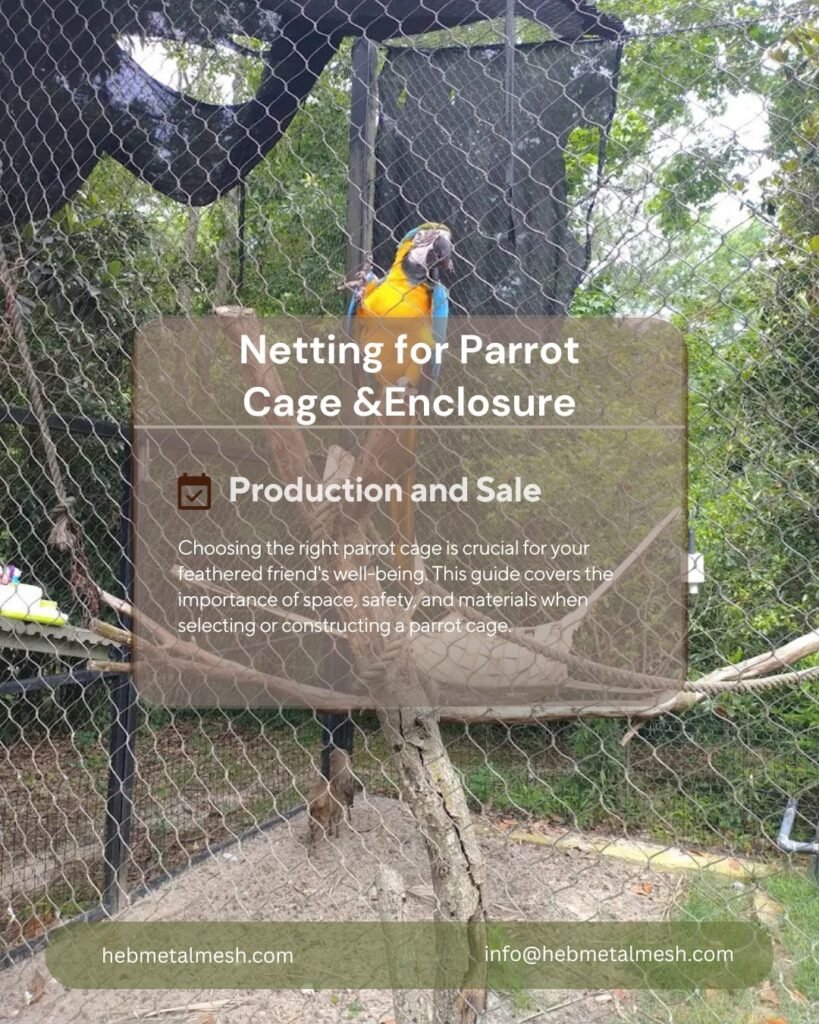Understanding the Need for the Right Parrot Cage
Choosing the right parrot cage is essential for the well-being and happiness of your avian companion. Parrots are intelligent and social creatures that require an environment that not only fulfills their physical needs but also caters to their psychological health. One of the primary reasons that pet owners seek to upgrade or create a new parrot cage is the need for increased space. Parrots thrive in environments where they can stretch their wings, climb, and explore. A crowded cage can lead to stress and behavioral issues, so it is vital to ensure the enclosure offers ample space for movement.
Additionally, safety from predators plays a significant role in the decision-making process. Many pet owners are concerned about potential threats from household pets or wildlife, making the choice of a secure, sturdy parrot cage critical. Wire rope mesh, known for its strength and durability, is an excellent option for ensuring that your feathered friend is protected from external dangers while still allowing for good ventilation and visibility.
Another common scenario prompting a new cage is the desire to enhance comfort and enrichment opportunities for the parrot. A well-designed cage can incorporate various accessories, such as perches, toys, and food stations, which can stimulate the bird’s natural behaviors. The layout of the parrot cage can impact the pet’s activity levels and overall quality of life. Before embarking on a DIY project or selecting an installation approach, conducting thorough research is imperative. Understanding the specific needs of your parrot, as well as adhering to safe building practices, will lead to a more successful and rewarding experience.
Ultimately, the right parrot cage not only serves as a sanctuary for your bird but also strengthens the bond between pet and owner. Prioritizing comfort, space, and security is fundamental in creating a nurturing home for your feathered friend.
Netting Specifications of Parrot Cage & Enclosure & Exhibition
| Item ID | Mesh Details | Material |
|---|---|---|
| HM1220 | 3/4″ x 3/4″ x 3/64″ | SS304/316 |
| HM1225 | 1″ x 1″ x 3/64″ | SS304/316 |
| HM1238 | 1.5″ x 1.5″ x 3/64″ | SS304/316 |
| HM1250 | 2″ x 2″ x 3/64″ | SS304/316 |
| HM1625 | 1″ x 1″ x 1/16″ | SS304/316 |
| HM1638 | 1.5″ x 1.5″ x 1/16″ | SS304/316 |
| HM1650 | 2″ x 2″ x 1/16″ | SS304/316 |
| HM2038 | 1.5″ x 1.5″ x 5/64″ | SS304/316 |
| HM2050 | 2″ x 2″ x 5/64″ | SS304/316 |
| HM2438 | 1.5″ x 1.5″ x 3/32″ | SS304/316 |
| HM2450 | 2″ x 2″ x 3/32″ | SS304/316 |
| HM3250 | 2″ x 2″ x 1/8″ | SS304/316 |
| HM3276 | 3″ x 3″ x 1/8″ | SS304/316 |
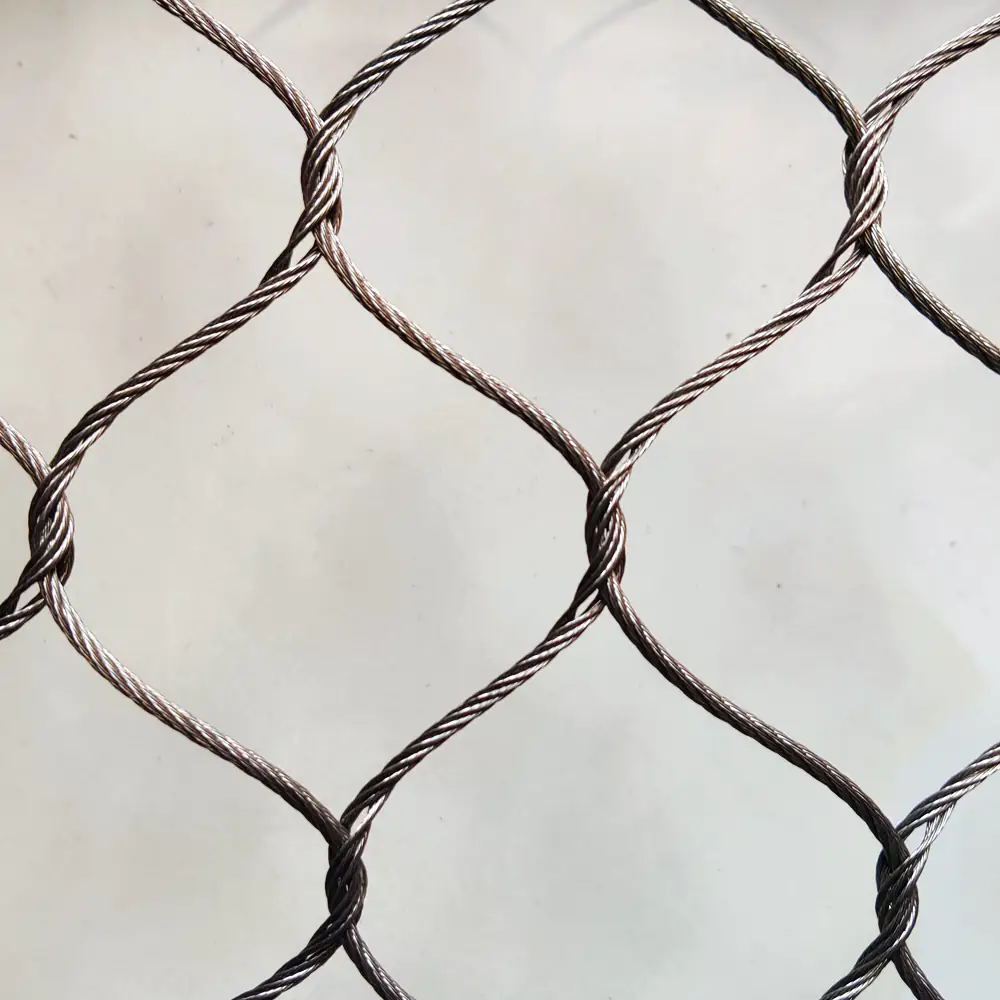
BestSeller: Premium Stainless Steel Parrot Aviary Netting | 1″ Mesh | 25ft x 60ft Rolls | Hebmetalmesh
Build a fortress of safety for your intelligent and powerful parrots with our professional-grade Parrot Aviary Netting. This isn’t ordinary wire; it’s handwoven Stainless Steel 304 Rope Mesh, engineered specifically to withstand the immense strength, curiosity, and powerful beaks of large birds like Macaws, Cockatoos, and African Greys. Our 1″ x 1″ mesh pattern provides an optimal balance of safety, visibility, and freedom, creating a secure and stimulating environment for your feathered family.
Why Choose Our Stainless Steel Netting for Your Parrot Aviary?
- Unmatched Beak & Predator Resistance: With a substantial 1/16″ thickness, this mesh is designed to resist bending, prying, and chewing from even the most determined parrots, offering superior protection against escape and predator intrusion.
- Built to Last a Lifetime: Crafted from Marine-Grade Stainless Steel 304, the netting is completely immune to rust and corrosion. It withstands all weather conditions—rain, sun, and snow—without weakening, ensuring your investment is permanent.
- Maximum Safety & Animal Welfare: The smooth, handwoven construction presents no sharp edges or points, eliminating the risk of injury to wings, feet, and beaks. It is non-toxic and safe for constant contact.
- Superior Visibility & Light: The 1-inch square mesh allows for excellent light penetration and clear lines of sight, reducing stress for your birds and letting you observe their natural behaviors without visual obstruction.
- Professional-Grade Roll Size: Each roll measures a generous 25 feet wide by 60 feet long, providing ample coverage for large flight cages, walk-in aviaries, zoo enclosures, or breeding facilities. Custom sizes are readily available.
Product Specifications:
- Material: Stainless Steel 304 (AISI 316 Optional for Coastal Areas)
- Mesh Size: 1 inch x 1 inch (25.4mm x 25.4mm)
- Mesh Wire Diameter: 1/16 inch (1.6mm)
- Standard Roll Size: 25 ft (Width) x 60 ft (Length)
- Available Colors: Natural Stainless Steel (Nature) or Durable Black Oxide Finish
- Customization: We specialize in custom sizes, shapes, and edge preparations to fit your exact aviary frame design.
Ideal for: Secure outdoor and indoor parrot aviaries, bird sanctuary enclosures, zoo bird exhibits, falconry mews, and large flight cages for parrots, raptors, and other strong-beaked birds.
Invest in Permanent Peace of Mind. Don’t compromise on the security of your valuable and beloved parrots. Our heavy-duty netting is the industry choice for experts who demand nothing but the best.
Price: $5,830.00 per standard roll (25′ x 60′)
Ready to order or need a custom quote for your project? Contact Hebmetalmesh today! Choose from the classic Nature stainless finish or the low-glare Black Oxide to blend seamlessly with your environment.
Secure Your Aviary with the Best Netting for Parrots.
Shop Now: Handwoven 1-Inch Stainless Steel Aviary Mesh
Exploring the Options: Types of Parrot Cages and Enclosures
When it comes to providing an optimal living environment for your feathered companion, understanding the various types of parrot cages and enclosures is essential. There are several options available, each with its own set of advantages and disadvantages. The primary categories include pre-fabricated cages, custom-built enclosures, and backyard setups.
Pre-fabricated parrot cages are widely popular due to their convenience and availability in various sizes and materials. These cages often come with features such as perches, food dishes, and toys tailored for specific parrot species. However, they may not always provide ample space, especially for larger birds or active species that require room to fly and explore. Additionally, the quality of materials can vary, which may impact the longevity and safety of the cage.
On the other hand, custom-built enclosures offer a tailored solution for parrot owners seeking a more personalized habitat. These structures can be designed to accommodate the specific needs of the parrot species, allowing for ample space and specialized features such as climbing areas and outdoor sections. While the initial investment can be higher, the long-term benefits often outweigh the cost, especially for owners of larger and more active parrots. Nonetheless, custom enclosures can require significant time and effort to construct and may necessitate regular maintenance.
For those with backyard space, outdoor aviaries present a unique option for enhancing the lives of parrots. These setups allow birds to experience fresh air and sunshine while safely enclosed. However, they are typically more complex to build and maintain, necessitating careful attention to both the environment and predator protection.
Ultimately, selecting the right parrot cage or enclosure is contingent upon the specific requirements of the parrot species and the owner’s preferences. By weighing the pros and cons of each type, parrot owners can create an environment that promotes health and happiness for their avian companions.
The Importance of Choosing High-Quality Materials
When it comes to constructing a parrot cage, the choice of materials holds paramount importance. The durability and safety of a parrot cage significantly impact the wellbeing of the birds it houses. Common materials used in the production of parrot cages include wrought iron, powder-coated metal, and an array of plastics. While these may serve their purpose, they often come with various limitations that can affect the longevity and safety of the enclosure.
Wrought iron cages, for example, possess sturdy structures that can endure wear and tear. However, they are susceptible to rust unless properly coated, which may deteriorate over time. Similarly, conventional metal cages often employ powder coating that can chip, exposing the underlying metal to potential corrosion. Such exposures pose health risks to parrots that might chew on the edges, leading to injuries or the ingestion of harmful substances.
In contrast, premium materials such as stainless steel wire rope mesh represent a superior choice for creating a safe and robust parrot cage. Stainless steel is not only exceptionally durable but also resistant to rust, corrosion, and tarnishing, ensuring that the cage withstands the test of time and weather conditions. Furthermore, the wire rope mesh design allows for adequate ventilation and visibility while creating a barrier strong enough to withstand the natural wear inflicted by energetic parrots.
Investing in high-quality materials for a parrot cage is ultimately a smart decision for any owner. The safety and comfort of your birds should never be compromised for the sake of cost. By choosing the best materials like stainless steel wire rope mesh, you contribute to the overall health and happiness of your beloved pets, making a long-term investment that pays off in peace of mind.
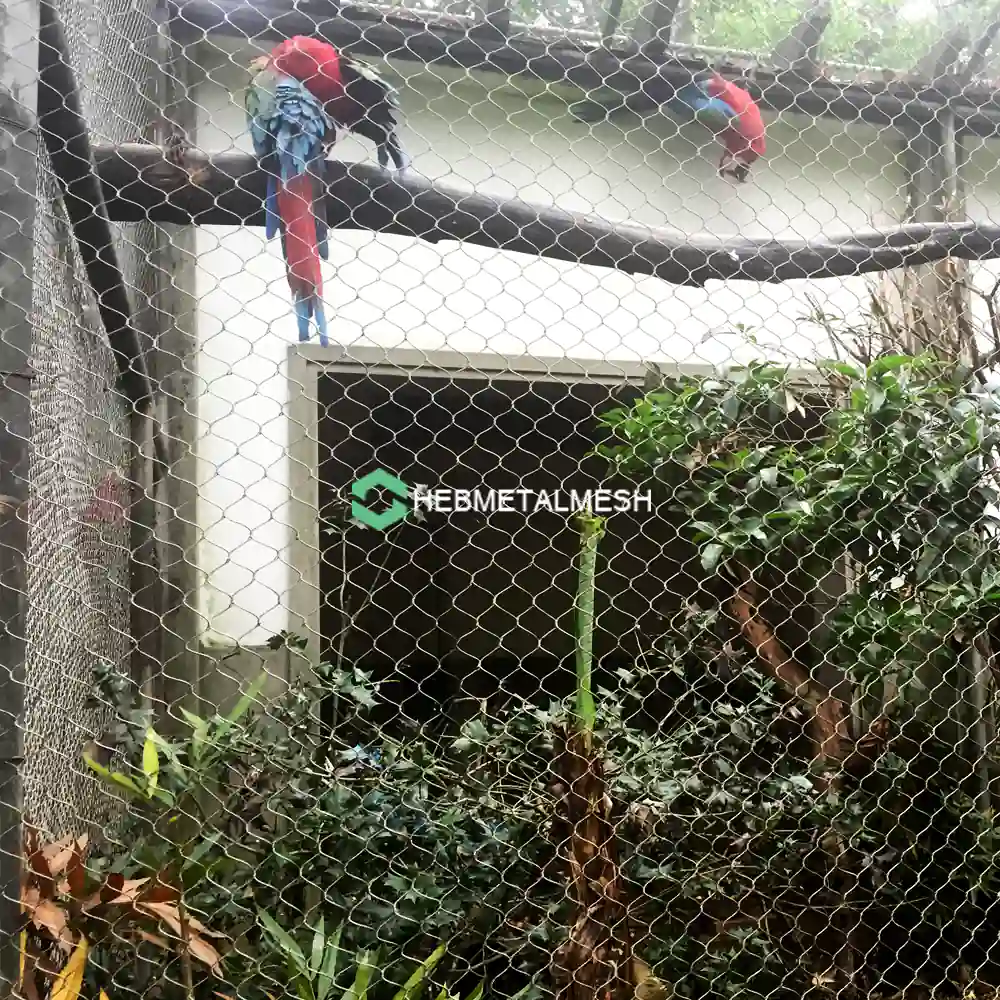
Why Wire Rope Mesh is the Game-Changer for Parrot Owners
When it comes to selecting the right material for a parrot cage, wire rope mesh stands out as a superior choice compared to traditional fencing options. This innovative material offers a unique combination of strength and flexibility, making it ideal for both small and large parrots. One of the most notable advantages of wire rope mesh is its unparalleled strength. Made from high-quality stainless steel or galvanized wire, it can withstand the vigorous activities of energetic parrots, ensuring that they remain safe within their enclosure.
Another significant benefit of wire rope mesh is its ability to endure extreme weather conditions. Unlike wood or softer metals that may warp, rot, or degrade over time, wire rope mesh is highly resistant to rust and corrosion. This durability means that parrot owners can trust their cages to maintain functionality and aesthetics, regardless of the climate. The robust construction of wire rope mesh also reduces the likelihood of damage from birds pecking or chewing, which is a common concern among pet owners.
Investing in a parrot cage constructed from wire rope mesh also translates into long-term savings. While the initial cost may be higher than other materials, the durability of wire rope mesh ensures that it will not need frequent replacements or repairs. This factor significantly reduces ongoing expenses, making it a cost-effective solution for parrot owners who prioritize quality and longevity. In conclusion, wire rope mesh not only guarantees the safety and comfort of pet birds but also serves as a financially savvy choice in the long run. With its remarkable benefits, it is clear that wire rope mesh is a game-changer for anyone looking to build a cage for their feathered companions.
Sizing Your Parrot Cage: Choosing the Right Mesh Width
When selecting a parrot cage, one of the most crucial factors to consider is the mesh size. The appropriate width of the mesh plays a significant role in ensuring the safety and comfort of your feathered friend. Different species of parrots have varied sizes and behavioral tendencies, which necessitates a tailored approach when determining the ideal mesh width for their cages.
For smaller parrots, such as budgerigars or lovebirds, it is generally recommended to use a mesh width of about 1 inch. This size prevents the birds from escaping, while still allowing ample airflow and visibility. A cage with 1-inch mesh provides a secure environment where these smaller species can feel safe without the risk of getting their heads or limbs stuck in wider openings. Additionally, this sizing supports the activity levels of smaller birds, as they often engage in climbing and exploring their surroundings.
On the other hand, larger parrot species, such as macaws or African greys, require a sturdier setup. For these larger birds, a mesh width of 1.5 to 2 inches is advisable. This ensures that the larger parrots are secure within their habitat without compromising their comfort. The wider openings allow for better visibility and movement while still providing structural integrity. It is crucial to avoid too narrow a mesh, as it may not support their strength and could potentially lead to injury.
When calculating the requirements for an effective parrot cage, it is helpful to consider the dimensions of the bird and the overall design of the cage. Measure your bird’s wingspan and height when choosing the dimensions. This careful consideration ensures that your parrot cage is not only safe but also a comfortable living environment for your cherished pets.
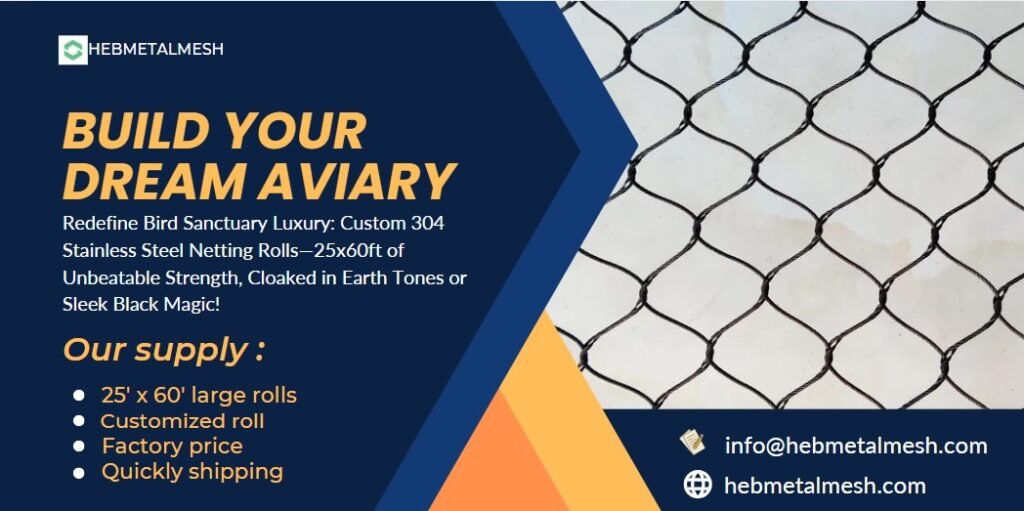
Aesthetic Considerations: Colors and Finishes for Parrot Cages
When selecting a parrot cage, aesthetics play a vital role in both the visual appeal and practicality of the enclosure. The color and finish of the cage can greatly influence the integration of the cage into your living environment, while also impacting its maintenance and longevity. Choosing the right color can enhance a room’s decor, making the parrot cage a harmonious addition to your home.
Natural colors, such as stainless steel, can blend seamlessly into a more organic or rustic environment. These hues not only create a calming effect for both the parrots and their owners but also might mimic the birds’ natural habitats, providing a more comforting experience for the birds. Additionally, these colors often help to mask imperfections or wear over time, which can prolong the aesthetic appeal of the cage.
In contrast, black oxide finishes present a more contemporary option for parrot cages. This dark, sleek coloration provides a dramatic presence that can complement modern decor styles effectively. The glossy surface of a black oxide finish is not only aesthetically striking but also easier to clean, as it tends to resist smudges and stains more effectively than lighter finishes. Furthermore, the industrial charm of these finishes often attracts bird owners who appreciate a more minimalist or urban aesthetic in their home.
Ultimately, the choice between natural colors and bold finishes will depend on personal preference and the specific environment in which the parrot cage is situated. A well-chosen color can enhance the overall experience of keeping parrots, contributing to a visually pleasing and functional living space. Consider the atmosphere you wish to create for both yourself and your birds when selecting the style of your parrot cage, ensuring it complements the decor while meeting the needs of the pets it houses.
DIY Parrot Cage: Tips for Building Your Own Enclosure
Building a DIY parrot cage can be a rewarding endeavor, allowing you to create a safe and stimulating environment for your feathered friend. The following guide will provide step-by-step instructions, including necessary tools and materials, ensuring that the finished enclosure meets both aesthetic and safety standards.
First, gather your materials. You will need wire rope mesh for the cage structure, wood or metal for the frame, screws, and a door latch system for easy access. Additionally, consider purchasing a solid base, like plywood or similar material, to ensure stability. For tools, have a power drill, wire cutters, and a screwdriver on hand. It’s also advisable to wear safety gloves and goggles while working to protect yourself during assembly.
Begin your cage construction by designing the dimensions based on the size of your parrot. Ensure that the cage is spacious enough for movement and that the spacing in the wire rope mesh is appropriate, preventing your parrot from escaping or injuring itself. Cut the wire mesh to the desired size and frame it with wood or metal, securing it tightly with screws.
While constructing, pay attention to ventilation and the overall structural integrity of the cage. A well-ventilated parrot cage is essential for your pet’s health. Create space for perches and toys, encouraging exercise and mental stimulation. When positioning the door, make sure it’s user-friendly but secure enough to prevent escapes.
Finally, avoid common pitfalls such as using toxic materials or leaving sharp edges. Sand down any rough areas and ensure that all components are tightly secured. Allow creativity to guide you in the design, but prioritize safety and functionality. With careful planning and execution, your DIY parrot cage will be a wonderful haven for your companion.
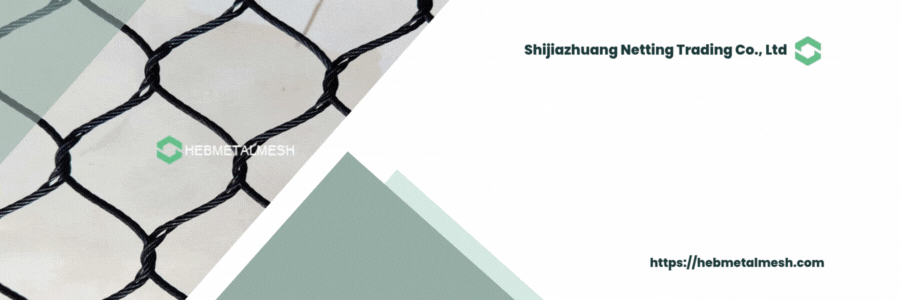
Maintenance Tips for Ensuring Longevity of Your Parrot Cage
Maintaining a parrot cage is crucial for the health and well-being of your feathered friend. A well-maintained enclosure not only extends the lifespan of the cage but also provides a safe and hygienic environment for your parrot. Regular inspection and care of your parrot’s habitat are key practices that every bird owner should adopt.
One of the primary materials used in constructing parrot cages is wire rope mesh, which is favored for its durability and strength. To keep your wire rope mesh in top condition, it is essential to perform routine inspections for any signs of wear or damage. Regularly check for rust, frayed edges, or bent wires that might pose a risk to your bird. If you notice any significant deterioration, it may indicate the need for repairs or even a complete replacement of the enclosure.
Cleaning is another fundamental aspect of maintenance. It is advisable to clean your parrot cage at least once a week to prevent the buildup of bacteria and other harmful pathogens. Use bird-safe disinfectants or a mixture of vinegar and water to clean surfaces, ensuring that all areas, including perches and toys, are scrubbed thoroughly. Rinse well to remove any residue, and allow the cage to dry completely before returning your parrot to its home.
Additionally, consider the materials used in other parts of the parrot cage, such as the bottom liner. Using easy-to-clean materials can simplify maintenance routines. Frequency of cleaning may vary based on your bird’s habits, so be observant and adjust your schedule as needed. Recognizing early signs that might indicate repairs are necessary is vital; such indications include excessive chewed areas, loose screws, or weak connections. Acting promptly helps maintain a secure environment for your parrot.
Investing in a Parrot Cage: A Lifetime Return
Investing in a quality parrot cage is not merely a financial decision; it is a commitment to providing a safe and nurturing habitat for your feathered companion. The joy of owning a parrot comes with the responsibility of ensuring its well-being and happiness, and an exceptional cage is a cornerstone of that responsibility. Choosing a parrot cage constructed with wire rope mesh is particularly advantageous, as it not only offers durability but also facilitates airflow and visibility, significantly enhancing your parrot’s quality of life.
When you opt for a well-designed parrot cage, you are essentially investing in your pet’s long-term health and happiness. Birds are social creatures that thrive on interaction and stimulation, and a spacious, secure cage allows them to express their natural behaviors. A quality cage provides enough room for your parrot to move around freely, engage in playful activities, and feel secure and protected. The right environment reduces stress and can lead to a longer, healthier life for your avian friend, emphasizing the lifetime benefits of this one-time expense.
Additionally, a durable cage made from wire rope mesh reduces the potential costs associated with repairs or replacements over time. Unlike flimsy materials, high-quality wire is resilient and can withstand the beaks and claws of active parrots. This careful choice not only saves you money in the long run but also ensures that your companion is safely housed. Ultimately, a well-constructed parrot cage allows you to form a deeper bond with your pet, as you watch them thrive in an environment conducive to their needs.
In conclusion, investing in a quality parrot cage with wire rope mesh represents a thoughtful decision that returns dividends in the form of companionship, health, and happiness for your beloved bird. The emotional rewards and the lasting peace of mind it brings cannot be overstated, making it a worthwhile investment for every parrot owner.
FAQs
Stainless steel wire rope mesh is durable, rust-resistant, and safe for parrots, making it ideal for large parrot cages or outdoor aviaries. Unlike cheaper materials, it won’t corrode or break easily, ensuring long-term safety for your birds.
For medium to large parrots (like macaws, cockatoos, or African greys), a mesh spacing of 1″ to 2″ is recommended to prevent injury or escape. Smaller birds, such as conures or lovebirds, may need 3/4″ to 1″ mesh for optimal safety.
Yes! Our stainless steel parrot cage mesh is weather-resistant and perfect for outdoor bird aviaries. It withstands rain, humidity, and UV exposure without rusting, making it a long-lasting solution for exotic bird enclosures.
Simply rinse with warm water and mild soap—no harsh chemicals needed. Stainless steel is easy to clean and hygienic, reducing bacteria buildup compared to coated or galvanized wire mesh.
While no material is 100% chew-proof, high-quality stainless steel parrot cage mesh is much more resistant to beak damage than plastic or powder-coated wires. For heavy chewers (like macaws), a thicker cable diameter (3/32″ 2.38mm) is recommended.
We offer custom-cut stainless steel wire rope mesh tailored to your parrot cage dimensions. Whether you’re building a large walk-in aviary or a hanging parrot playpen, we provide durable, bird-safe mesh in various sizes.
